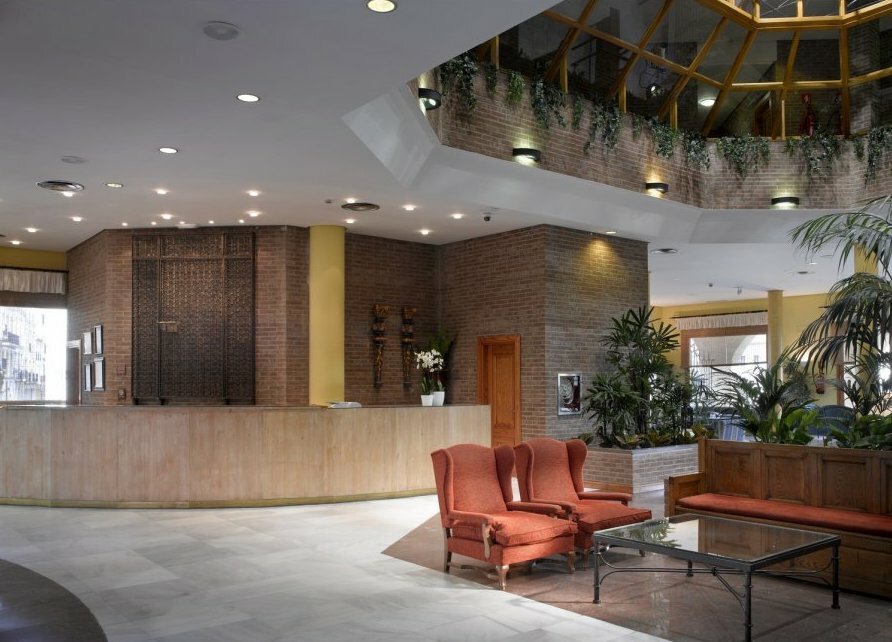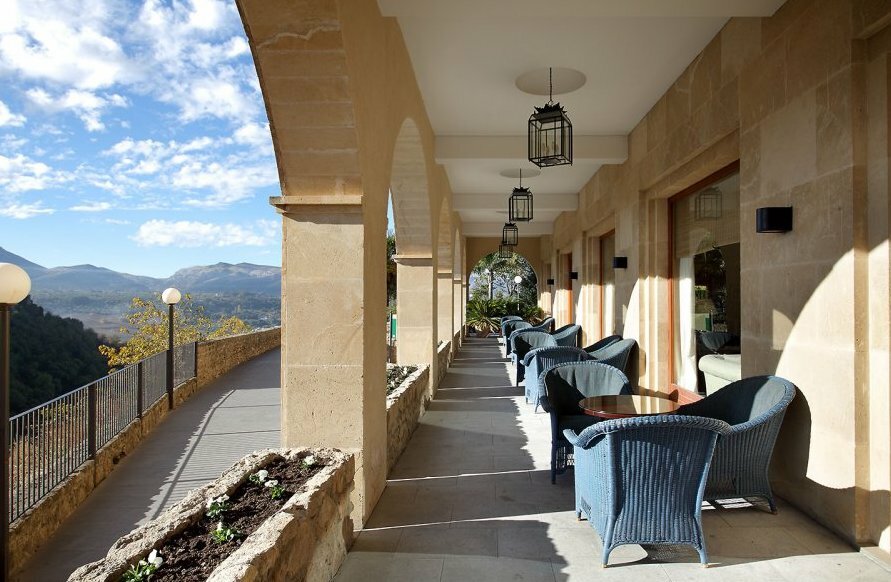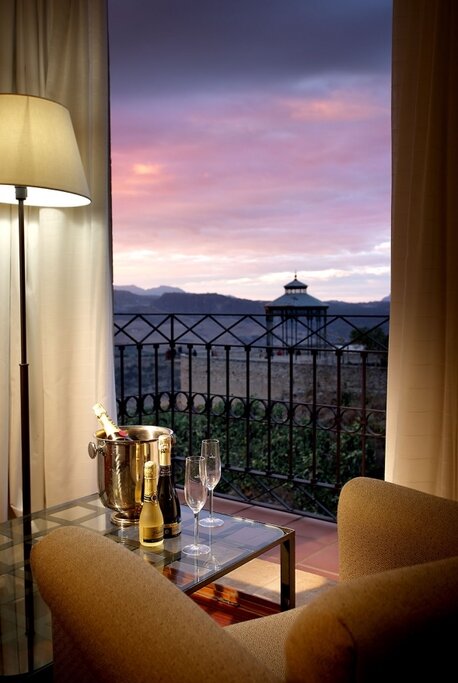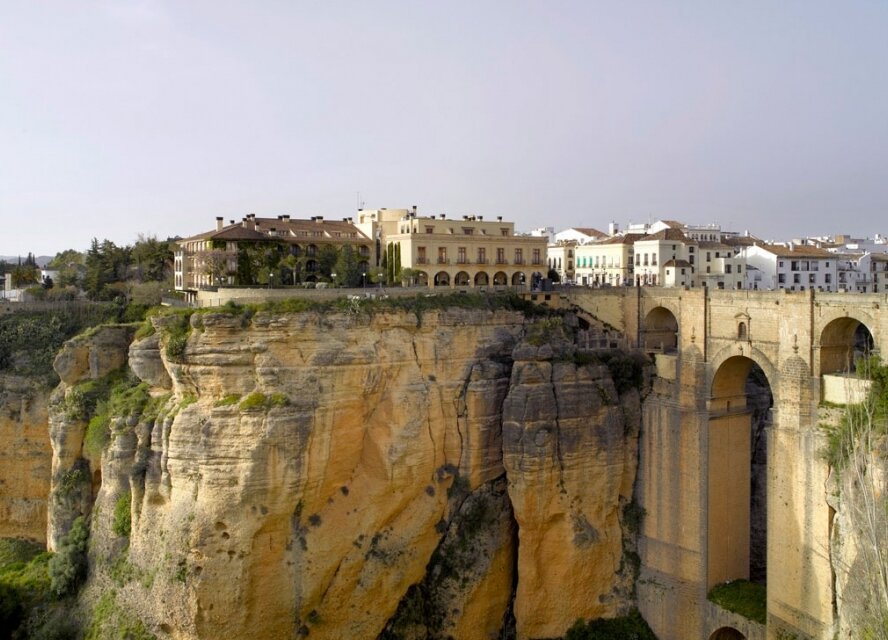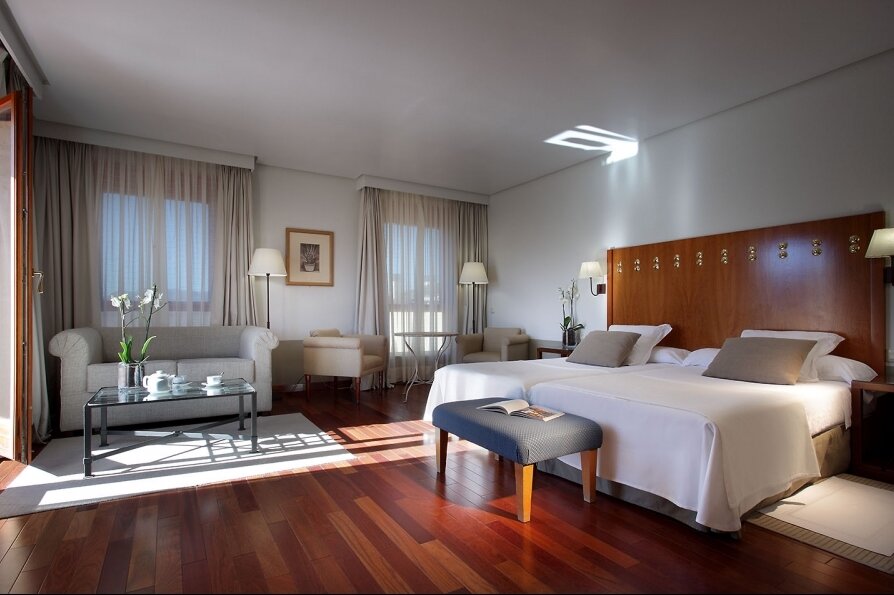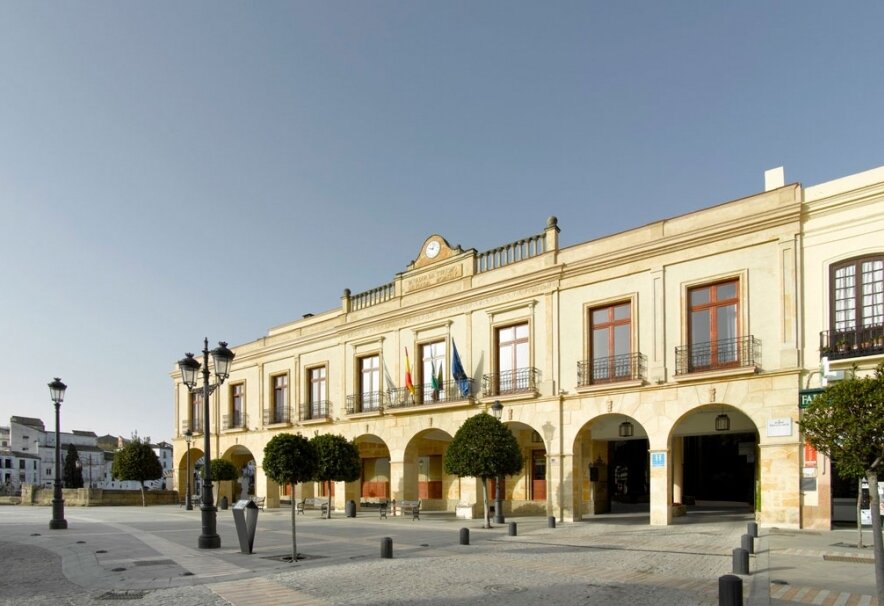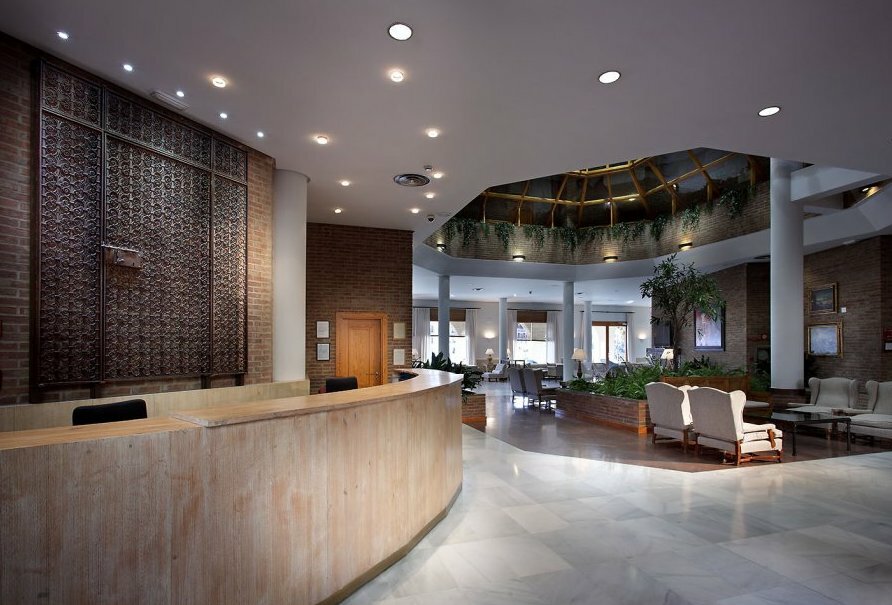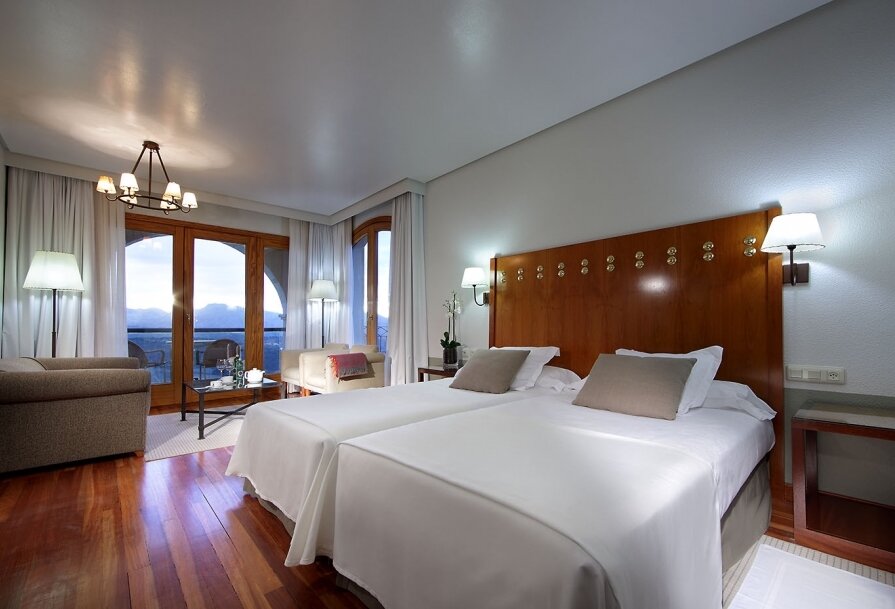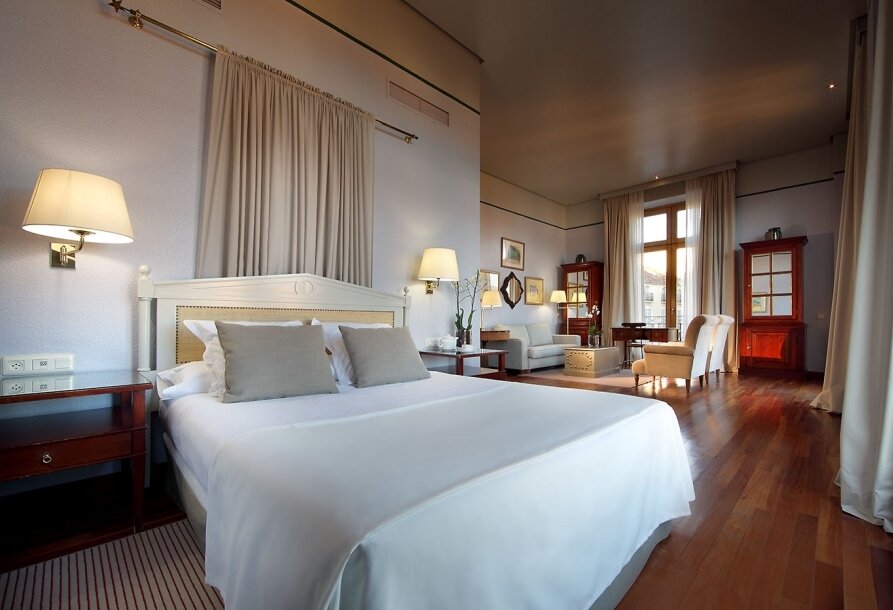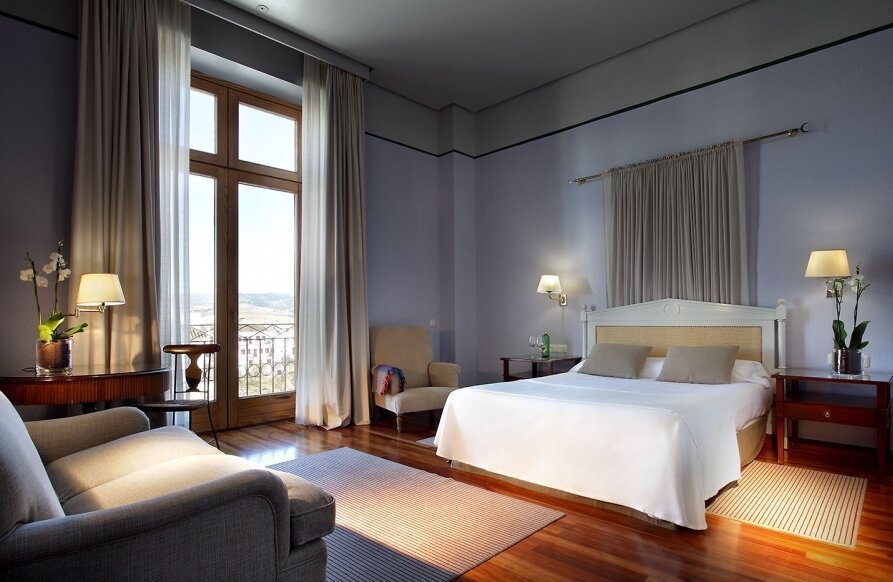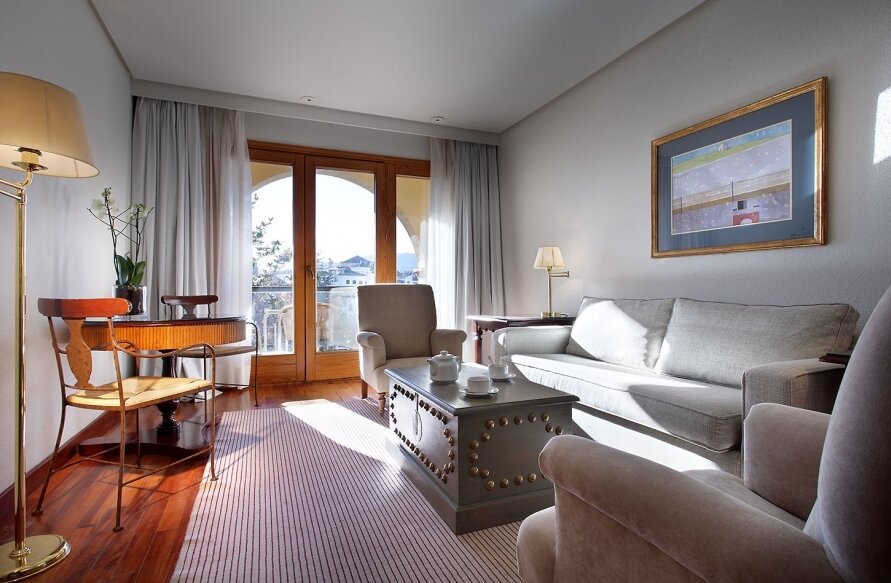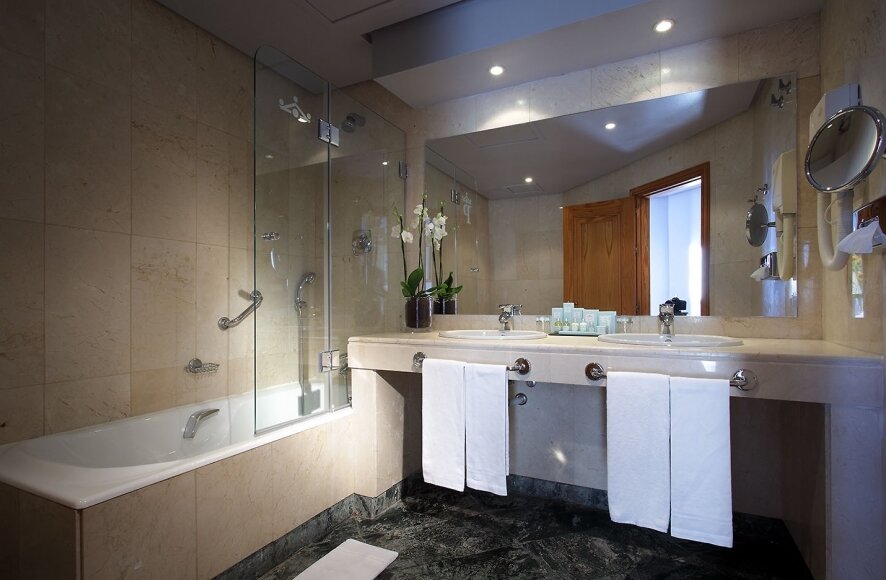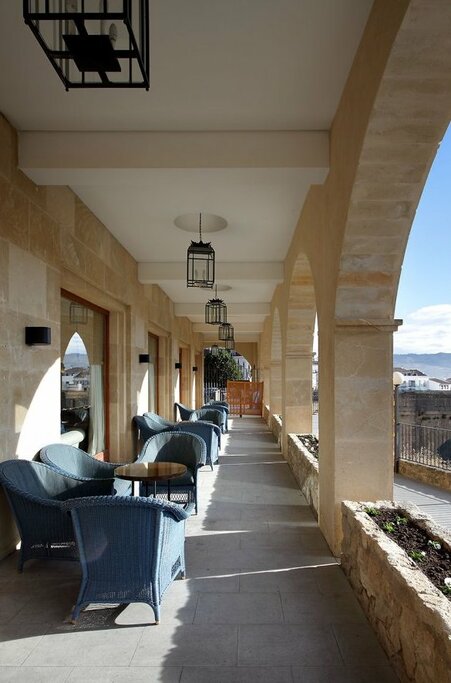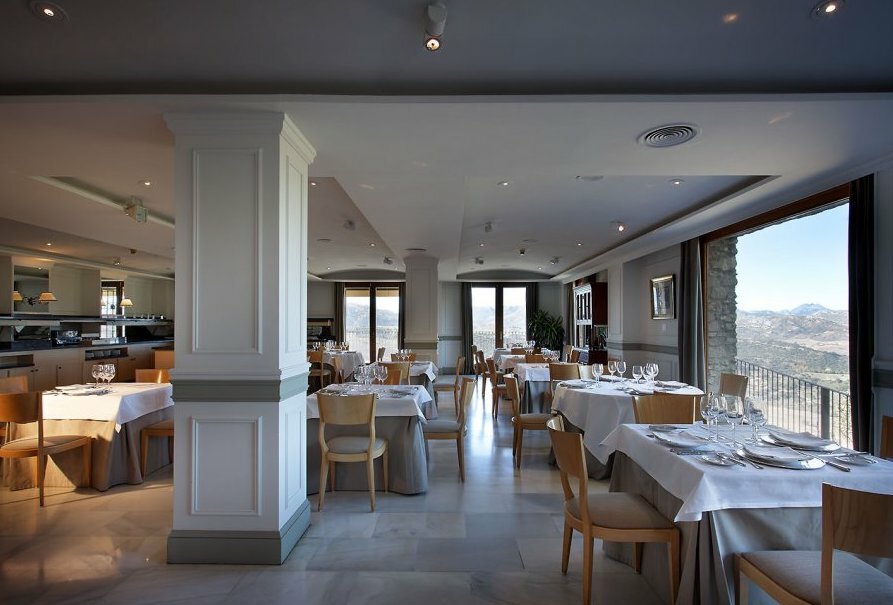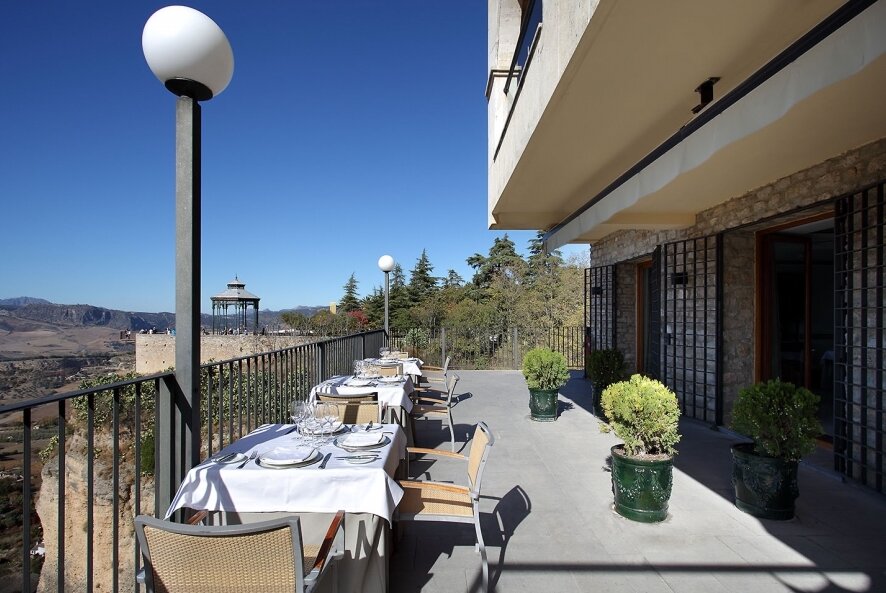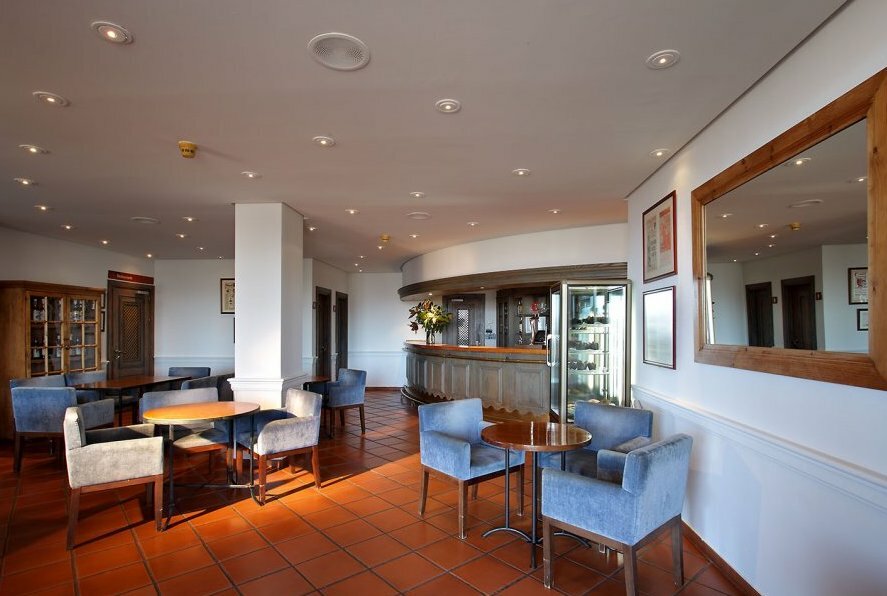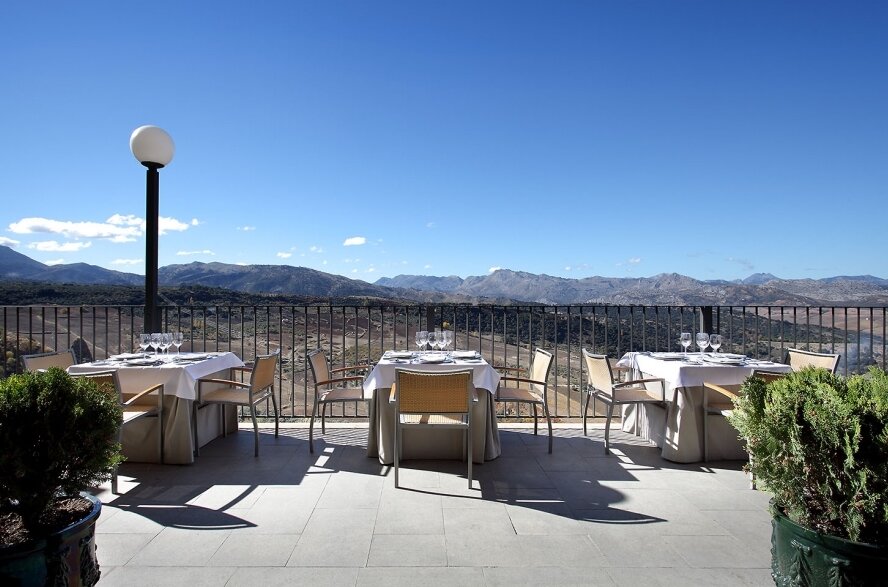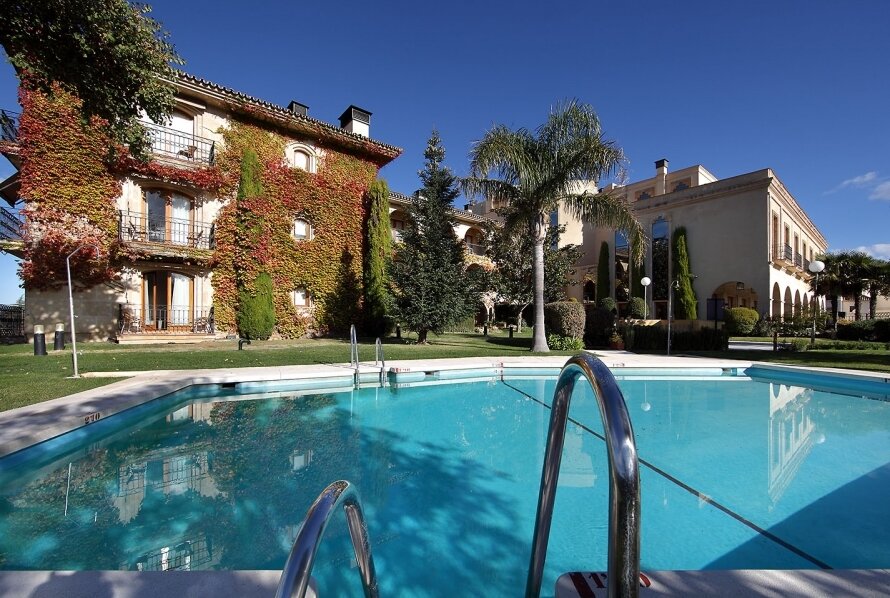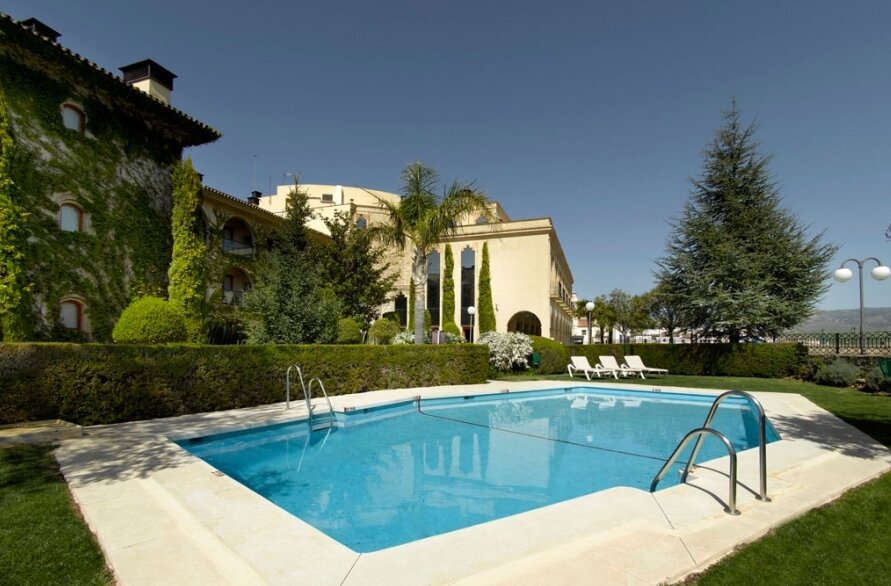Parador de Ronda, Ronda Hotels
Historic clifftop hotel in Ronda with scenic views, two restaurants, outdoor pool, and family-friendly amenities
Nestled dramatically on a clifftop within the heart of Ronda’s historic district, the Parador de Ronda offers a unique and captivating experience. This distinguished establishment is one of Spain’s renowned “paradores,” a collection of accommodations meticulously managed by the Spanish government. The hotel boasts 78 well-appointed rooms and enjoys a prime location adjacent to the iconic bridge that gracefully links the city’s ancient Old Town with its more modern counterpart.
Choosing to stay at the Parador de Ronda allows you to immerse yourself in the very essence of the city, positioning you right next to the breathtaking Puente Nuevo, which spans the awe-inspiring El Tajo Gorge. Uniquely situated on three sides of the cliff, many corner rooms provide truly unforgettable panoramas. Guests can also savor these remarkable vistas from the hotel’s two restaurants, inviting outdoor terraces, and refreshing outdoor swimming pool.
**Advantages of Staying Here:**
The Parador de Ronda’s exceptional location results in almost every room offering a spectacular view. Whether it’s the majestic Puente Nuevo, the dramatic gorge itself, the sprawling valley below, the historic Old Town, or the scenic Mirador de Ronda, there’s always something captivating to behold. The hotel is also conveniently located within easy walking distance of several other notable attractions. These include the historic Bullring of the Royal Cavalry of Ronda, the stunning Mirador de Ronda offering panoramic views, and the tranquil Alameda del Tajo Park, perfect for leisurely strolls. Guests can enjoy a refreshing dip in the outdoor pool and unwind on comfortable sun loungers nestled on the grassy lawn. Furthermore, the hotel offers a variety of inviting spaces to relax and socialize, including outdoor terraces and patios, as well as cozy indoor lounges. The hotel’s two restaurants feature expansive windows and al fresco dining options on terraces, all providing beautiful views of the surrounding scenery.
**Potential Drawbacks to Consider:**
While the location and views are undeniably stunning, some rooms may appear somewhat dated in terms of furnishings and décor, particularly the bathrooms. Families traveling with young children should also be aware that children aged three years and above are charged as adults, which may impact the overall cost of the stay. Another point to note is that pool towels are not provided, and there is currently no poolside food or drink service available.
Hotel Information
 Wifi – Check On Request
Wifi – Check On RequestSpain
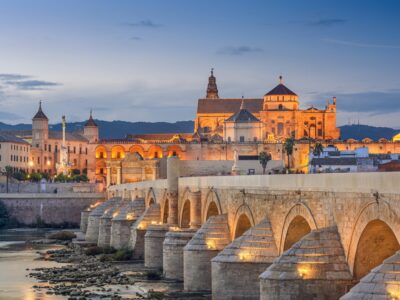
You won't need to go far beyond the Alhambra of Granada and the streets of Barcelona to find the real Spain. Step away from the crowds and you'll find that this destination has retained its depth—centuries of history linger in hilltop villages, and wild landscapes abound from the craggy Pyrenees to the Mediterranean coast. This is where you come to revel in the good life, whatever that means to you: hiking through Galicia, embracing the architecture of Bilbao, or eating your way through the Basque Country.
When is the best time to visit?
Generally, April-June and September-October offer the most pleasant weather and fewer crowds than peak summer months. One exception is northern Spain, where springtime sees more rain than in other parts of the country; here, June-September is your best bet. July and August are the hottest months of the year—for sun worshippers, this could be the perfect time to visit.
Where should I go in Spain?
If you're heading to Spain for the highlights, you'll want to start with Madrid, Barcelona, Granada, and Seville. Not your first trip? Consider San Sebastián, Bilbao, Santiago de Compostela, and Valencia. And if you truly want to venture off the track, craft your itinerary from the literal road less traveled—hike through the Pyrenees to hidden villages, drink wine in La Rioja, explore Mérida and the Extremadura region, and the list goes on.
How many days do I need?
While it's possible to have a fun trip to one of Spain's cities over a long weekend, we recommend at least 5 days if you really want to experience a region. Madrid makes for a great base for taking regional day trips, and the same goes for Barcelona—medieval coastal villages and hiking trails in the Pyrenees are all within driving distance.
If you have 10 days, choose between northern and southern Spain to minimize travel time. A southern route could include Madrid, Mérida (or another stop in Extremadura), Seville, and Granada. Travelers interested in the north can hit Barcelona, San Sebastian, Bilbao, Oviedo, and Santiago de Compostela. With two weeks or more, geography is no longer an issue—just connect the dots to form a country-wide itinerary.
Getting around Spain
Most travelers fly into either Madrid or Barcelona, and short, domestic flights are a convenient way to hop between major cities. Flying is also the best option for reaching the Canary Islands, Ceuta, and Melilla. For areas without airports, Spain’s high-speed AVE trains are fast and comfortable. Driving is another good option, as cities are mostly connected by well-maintained highways.
Read more
We are sorry, there are no reviews yet for this accommodation.

